Lloyd Wright’s reinvigorated Sowden House in Los Angeles
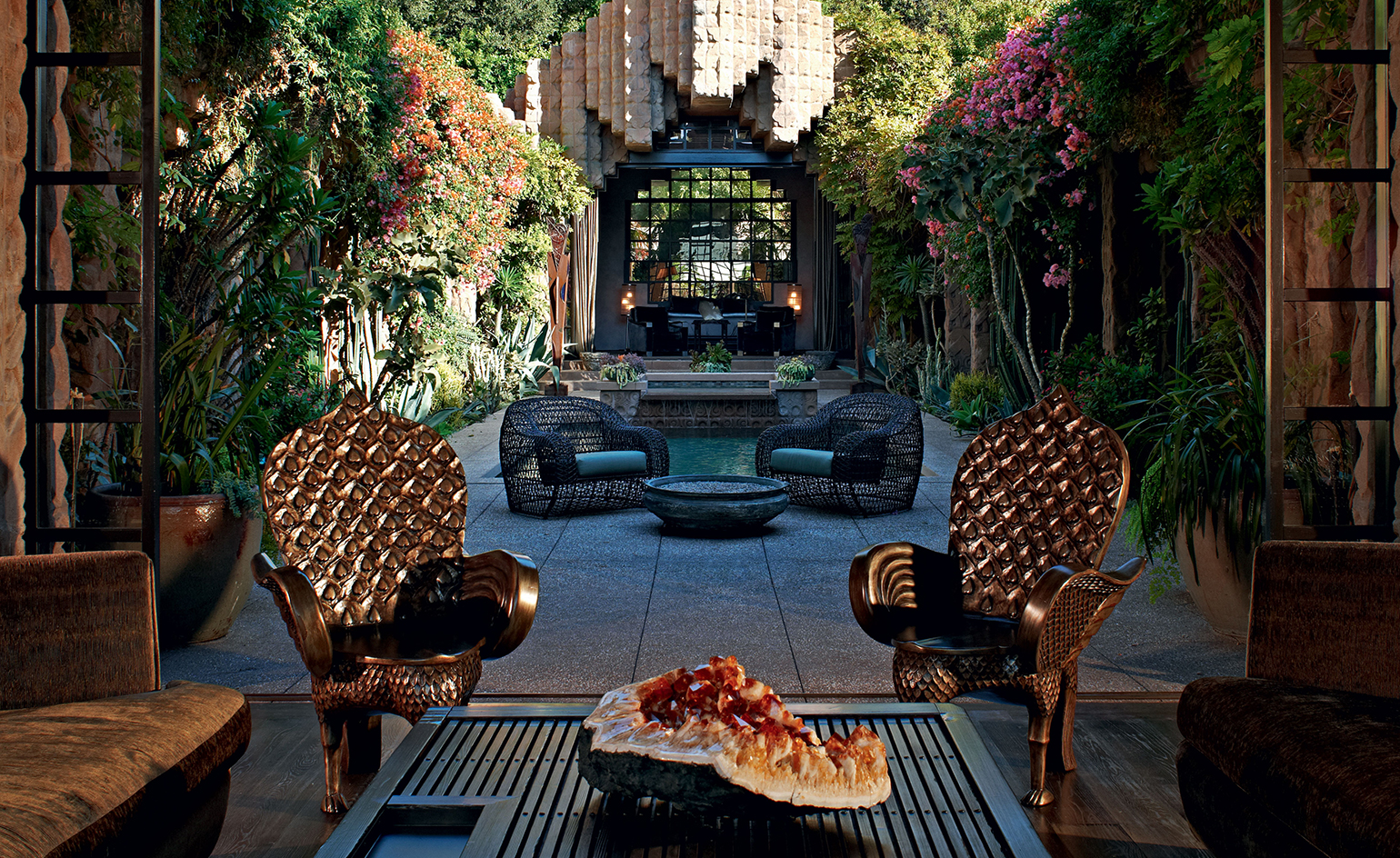
Frank Lloyd Wright once said: ‘Tip the world on its side and everything loose will land in Los Angeles.’ The famously autocratic architect and philanderer may have pooh-poohed the city as a cultural wasteland, but it was there, under the glaring Southern Californian sun, that he built some of the greatest houses of the 20th century.
It was also in Los Angeles, under the same unforgiving sun, that Frank Lloyd Wright Jr attempted to step out from his father’s shadow and establish an independent identity as an architect. He wasn’t very successful. The feeble gesture of dropping the ‘Frank’ and ‘Jr’ from his name failed, predictably to distinguish Lloyd Wright from his grandiose progenitor. Furthermore, throughout his long career, the younger Wright never managed to define a personal style that did not echo, in both sensibility and detail, the work of dear old Dad. It’s no wonder that local LA lore frequently confuses houses designed by Wrights père et fils.
In the early 1920s, Lloyd Wright served as construction manager on three of his father’s classic Mayan-flavoured, concrete-block houses – the Storer House, the Freeman House and the Ennis House (which notably appeared in Blade Runner as the set for Harrison Ford’s apartment). A few years after the completion of those landmarks, the younger Wright made an architectural splash of his own with a daring homage in the LA neighbourhood of Los Feliz.
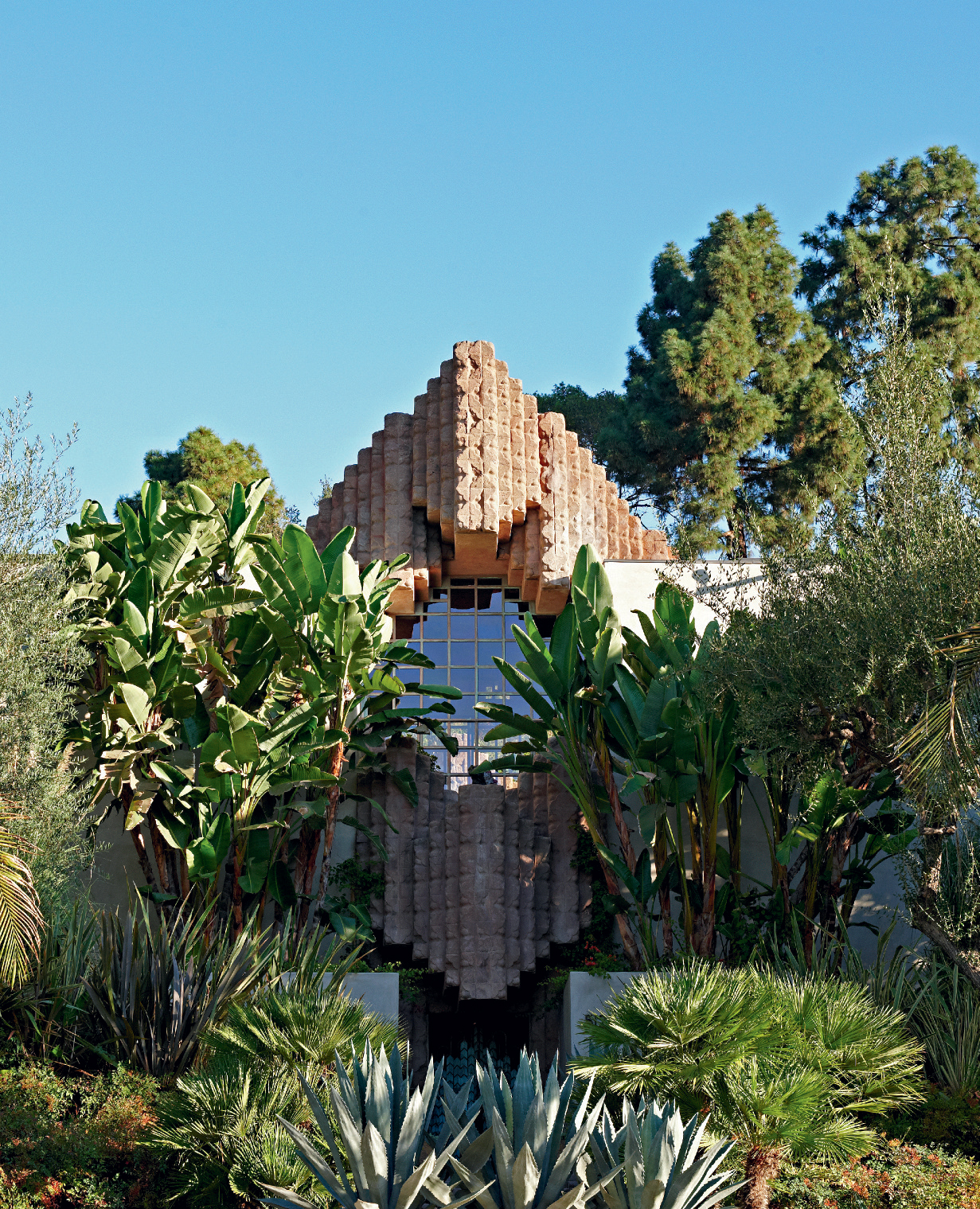
Inspired by ancient Mayan pyramids, the façade’s sandy concrete blocks emerge from a lush Californian garden.
The Sowden House of 1926 gives a nod to the ancient temple references of its forebears, but makes them decidedly more explicit. With its symmetrical façade crowned by a prow of heavily worked concrete and its grand entry stair that leads from the street through a jungle landscape, the structure emerges like a ruined temple nestled in a primordial forest – Angkor Wat by way of Hollywood Boulevard. The formal entry progression leads through a set of copper gates, up another internal staircase and eventually arrives at the threshold proper, where the architectural drama unfolds in one theatrical sweep of space: two peaked pavilions, made of stepped concrete blocks, connected by two low arcades, wrapped around a lushly planted courtyard cloister.
Like so many of Los Angeles’ architectural treasures, the Sowden House had fallen on hard times by the close of the last century. When LA-based designer and developer Xorin Balbes acquired the property in 2001, the immediate need for structural repairs forestalled any questions regarding decoration or aesthetic direction.
‘It was a ruin in more than just a figurative sense,’ says Balbes. ‘We spent two years re-solidifying the porous concrete block, rebuilding the foundations and perimeter walls, and replacing every building system. The enormous amount of work makes you understand why people are often reluctant to undertake this kind of rescue project. But this house called out to me from the moment I stepped inside.’
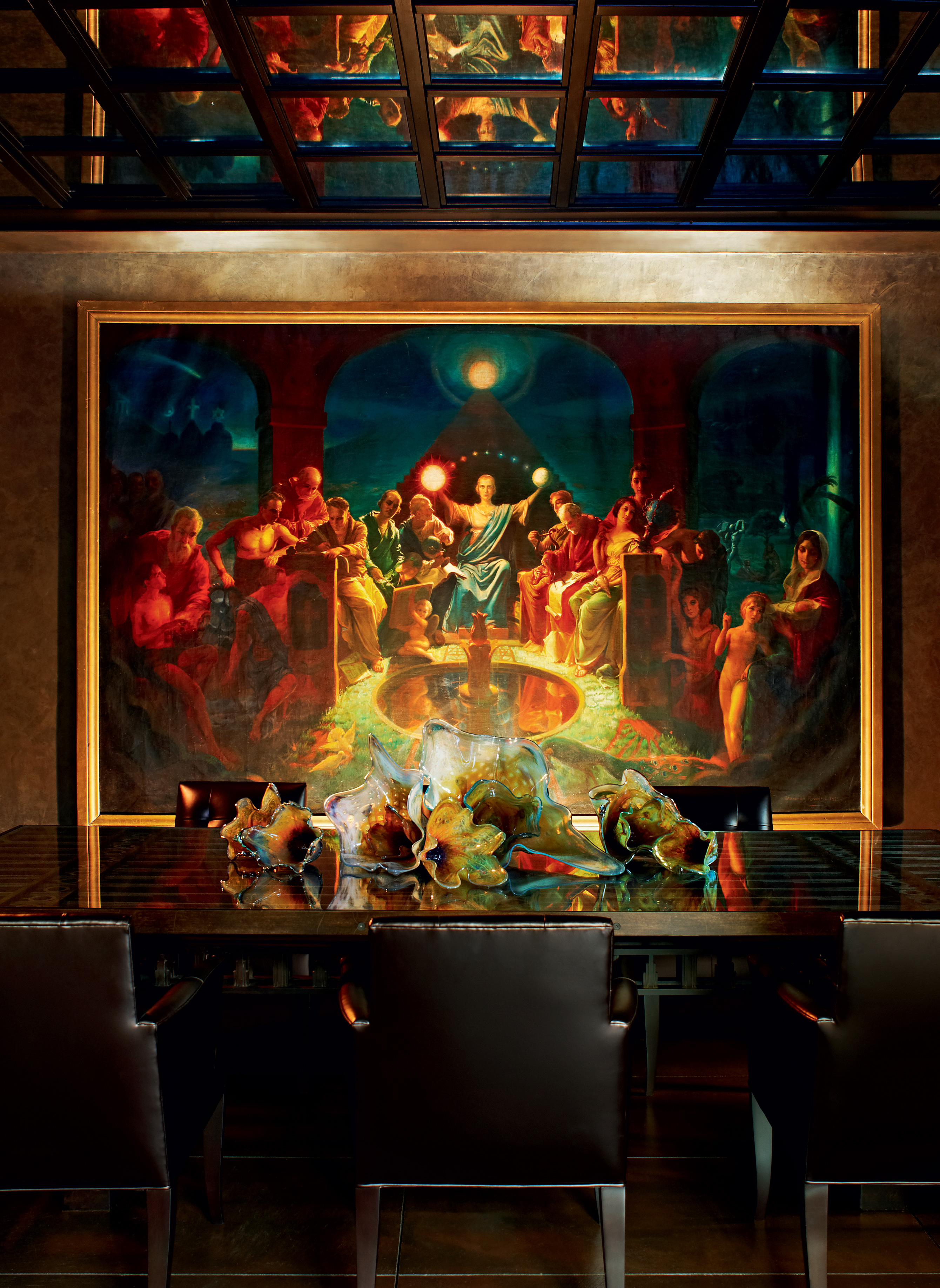
The dining room is dominated by an Alexander Rosenfeld painting depicting different religions coming together as one and a 20th-century glass centrepiece by Lucy Chamberlain.
Balbes worked with Paul Ashley and Norm Wogan, his design partners at the aptly named firm TempleHome, to prepare the house for a meaningful existence in the 21st century. In addition to remedial work on the structure, the team made significant changes to the plan to reflect the needs of a contemporary household. The servants’ wing was transformed into dining, kitchen and lounge spaces, and connected to the courtyard through new openings between the concrete columns. At the far end of the courtyard, under the prow of the second pavilion, an erstwhile studio space was turned into the master bedroom, which, elevated on three broad steps, appears to be the high altar of this temple fantasy.
As for the interiors, Balbes confesses that his original decorative scheme was a bit tame and deferential. ‘I was really intimidated by the pedigree of the house, which suppressed my own creative energy,’ he says. ‘I lived here for six years after the first renovation and over time my sensibilities changed and my confidence grew. I finally felt like I could create interiors that has as much presence as the architecture.’
Confidence, indeed. Much to the consternation of stern preservationists and Wrightophiles, Balbes (once again working with Wogan) served up a tangy olio of periods, styles and moods – a mix the homeowner describes as ‘sexy, rich, masculine, modern, deco, Asian, spiritual and industrial’. These typologies have obvious correlations. Asian notes, for instance, are struck by the gilded peacock chairs and repurposed Japanese door-cum-coffee table in the living room, and the tansu chests in the master bathroom. Ubiquitous metallic velvets and vinyl upholstery fabrics qualify as either rich, industrial or masculine depending on one’s point of view. For sex appeal, there’s the master suite’s platform bed with illuminated, leather-wrapped steps, which has a very 1970s, Eyes of Laura Mars quality about it.
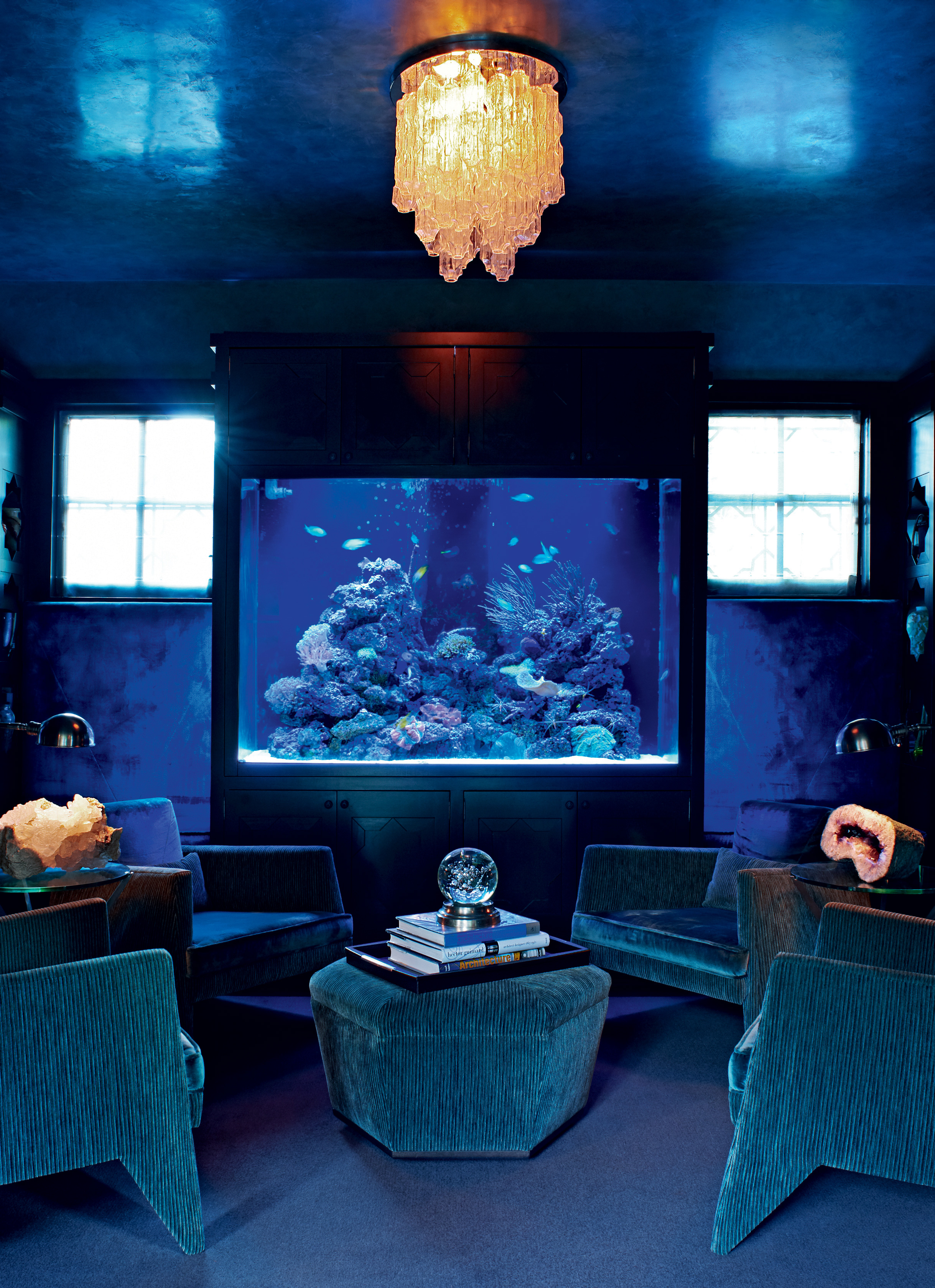
The Reflection room, with chairs and ottoman by Lloyd Wright.
It is in the area of spirituality, however, that Balbes truly brings his idiosyncratic sensibility to life. Consider the abundance of crystals and geodes. ‘They are anchoring elements that connect the house to the energy of the earth. They give off a frequency and vibration that supports the spirit of the house,’ he says. The same New Age spirituality informs the designer’s description of the large oil painting that dominates the dining room, Unity: The Unification of Humanity, by Alexander Rosenfeld: ‘It depicts people of different religions and vocations coming together as one. The composition reminds me of The Last Supper, buy the mood isn’t about masculine energy, it’s about the divine feminine,’ says Balbes. ‘When I stumbled on it at an antiques show, I felt like it belonged to me. It reminds me that I should be doing all I can to create unity in humanity.’
Balbes, who is planning to open a spiritual retreat in Maui, has codified his design philosophy in a book called SoulSpace. ‘Your environment must be connected to the deepest parts of yourself. It should contain reminders to keep you focused on your dreams,’ he explains. ‘I am incredibly fortunate to have a house that is both so inspiring and restful. I realise that I am the steward of this space and that I must pass it on to another generation. The responsibility feels that sacred to me.’ A temple to living, indeed.
As originally featured in the March 2010 issue of Wallpaper* (W*132)
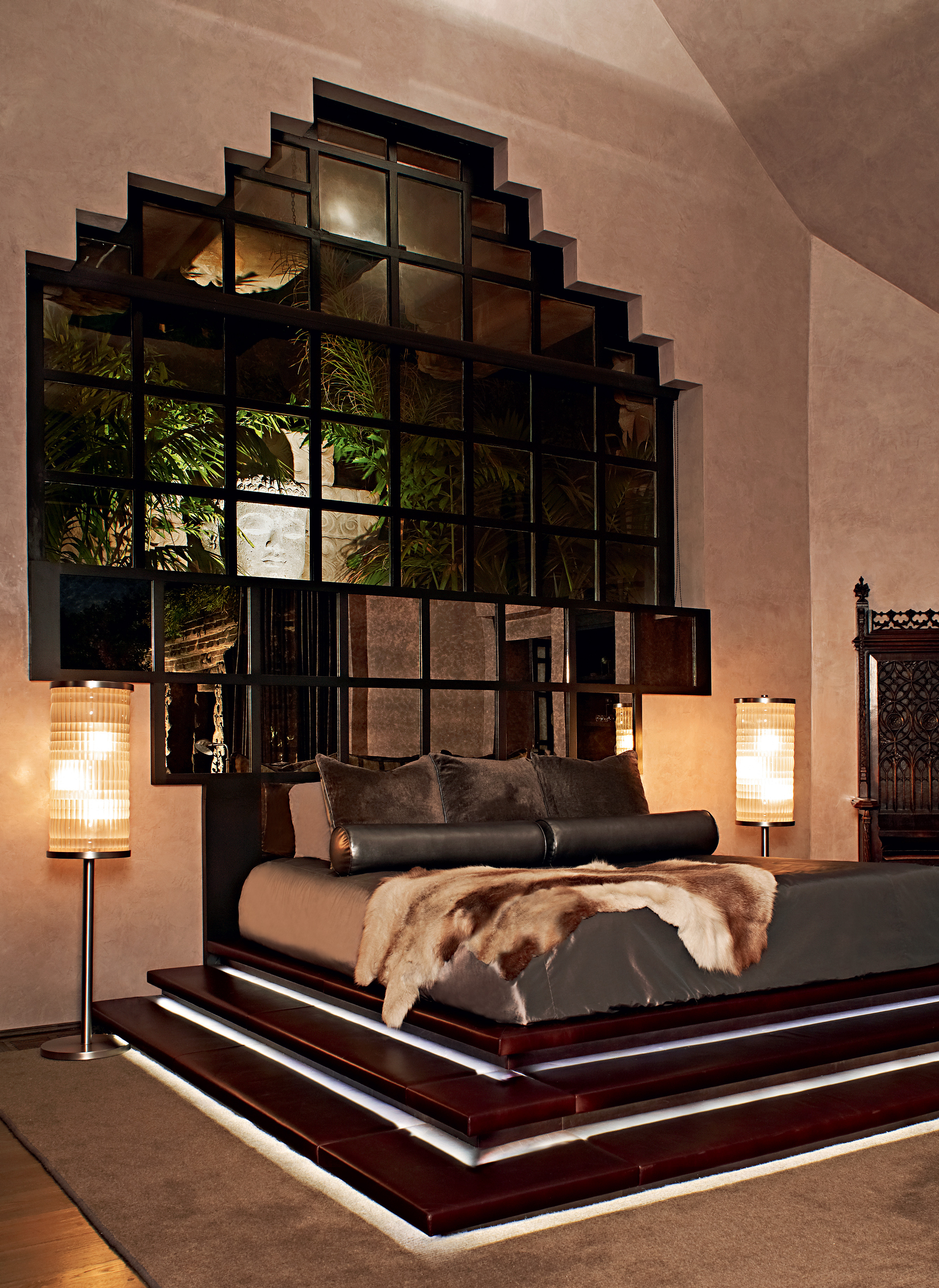
The master suite features a platform bed boasting illuminated, leather-wrapped steps
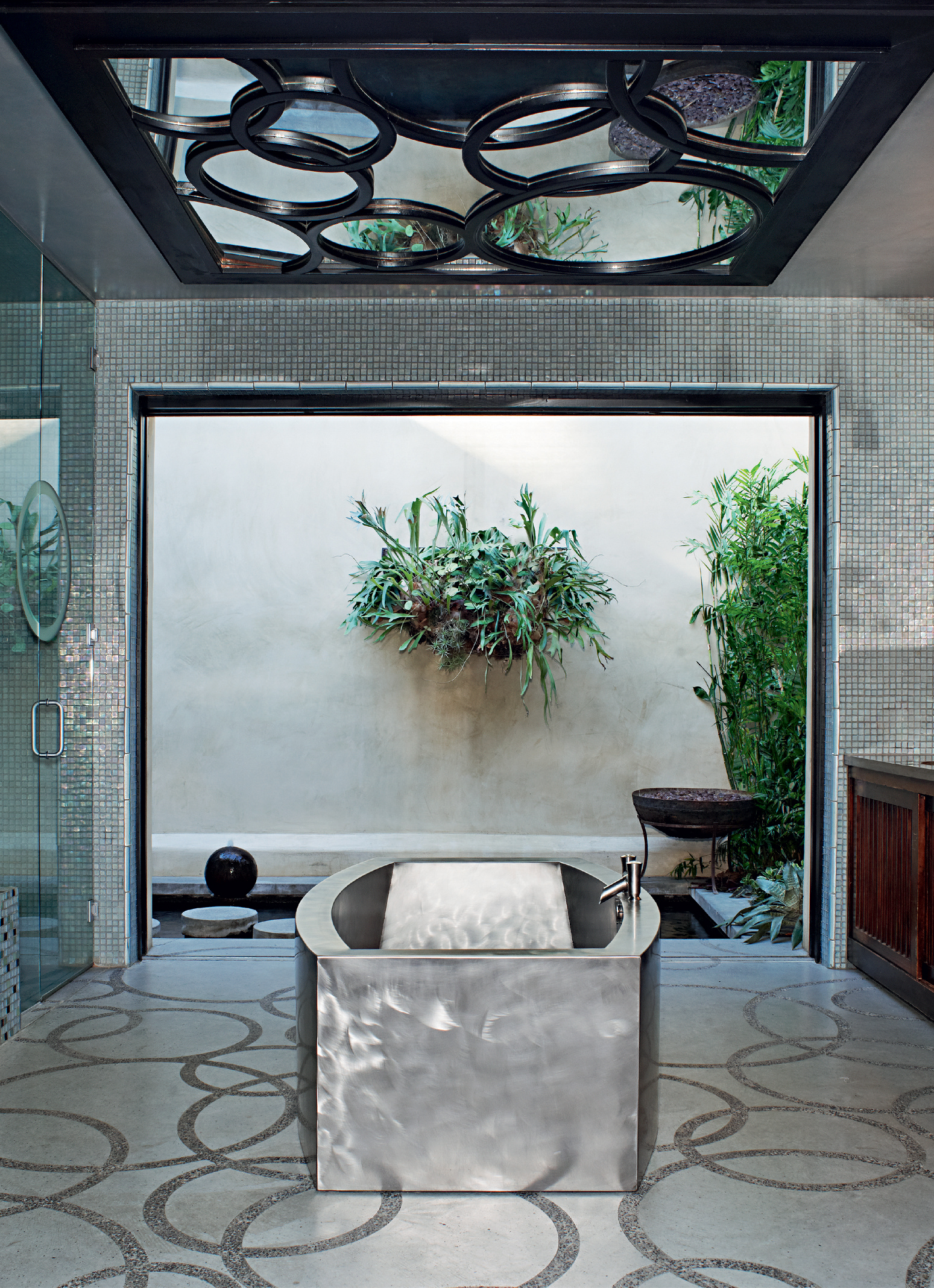
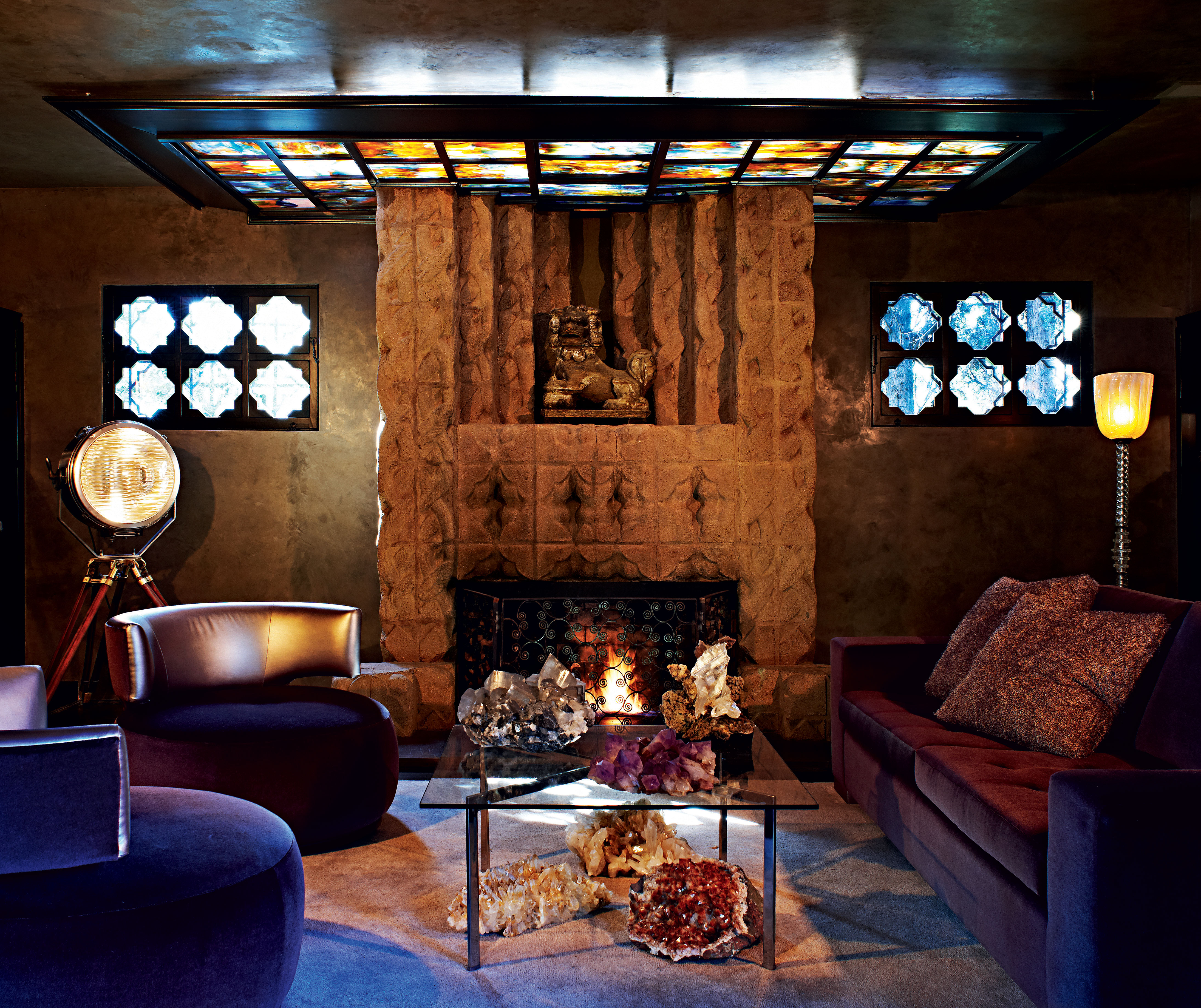
The library features a 1920s Klieg light, once used in film studios, and armchairs and sofa by TempleHome. Crystals and geodes are displayed all around the house, as Balbes believes they help connect it to the energy of the earth
INFORMATION
For more information, visit the TempleHome website
Receive our daily digest of inspiration, escapism and design stories from around the world direct to your inbox.
-
 Rivian hits Miami Art Week to release R1S Quad Miami Edition, a new colour and a scent
Rivian hits Miami Art Week to release R1S Quad Miami Edition, a new colour and a scentVivid sights and evocative smells are part of Rivian’s quest to humanise its all-electric SUVs
-
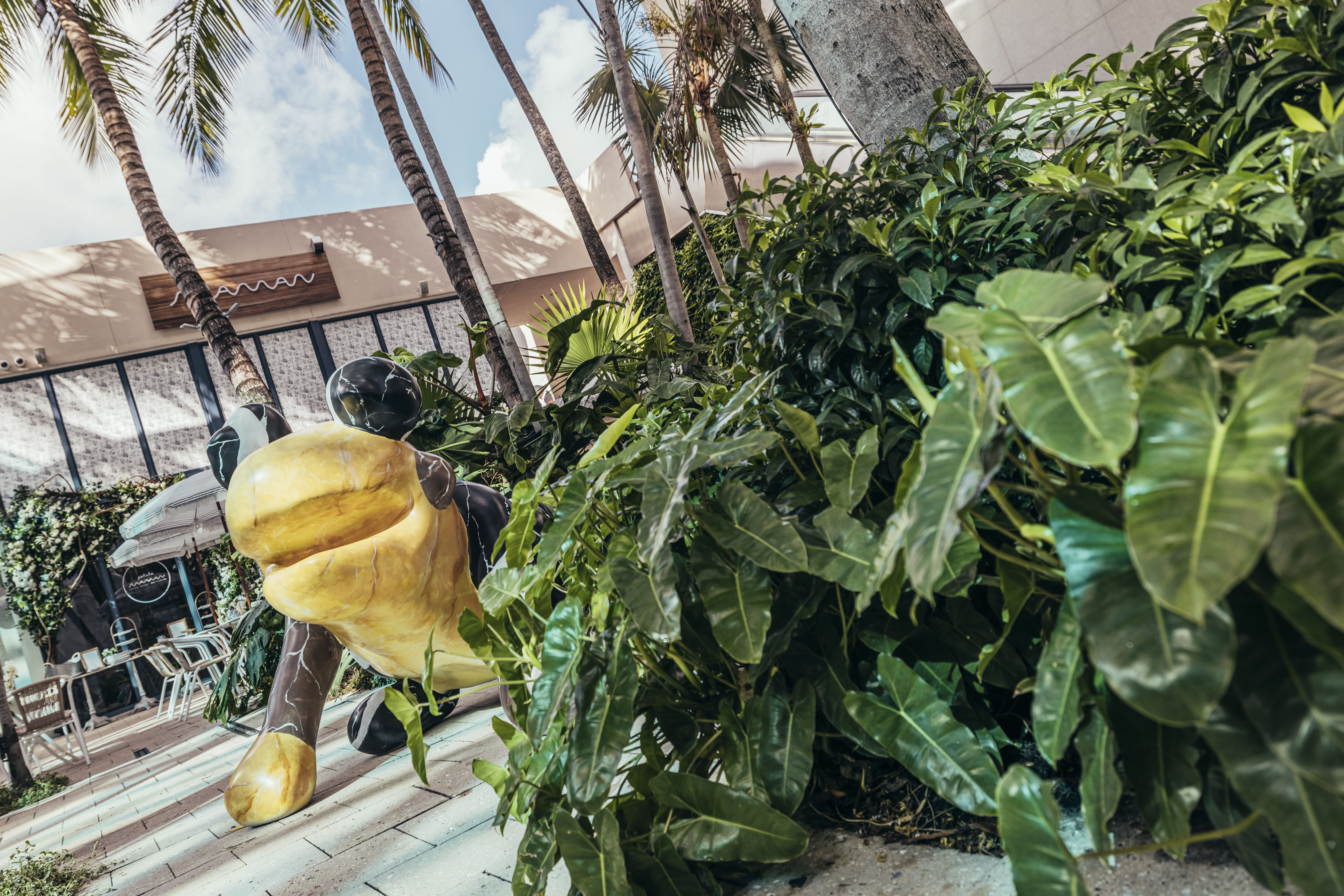 Katie Stout installs a stone menagerie across Miami's Design District
Katie Stout installs a stone menagerie across Miami's Design DistrictHorses, frogs and even a mermaid have taken over the avenues of Miami Design District. Discover ‘Gargantua’s Thumb’, a collection of stone seating by designer Katie Stout
-
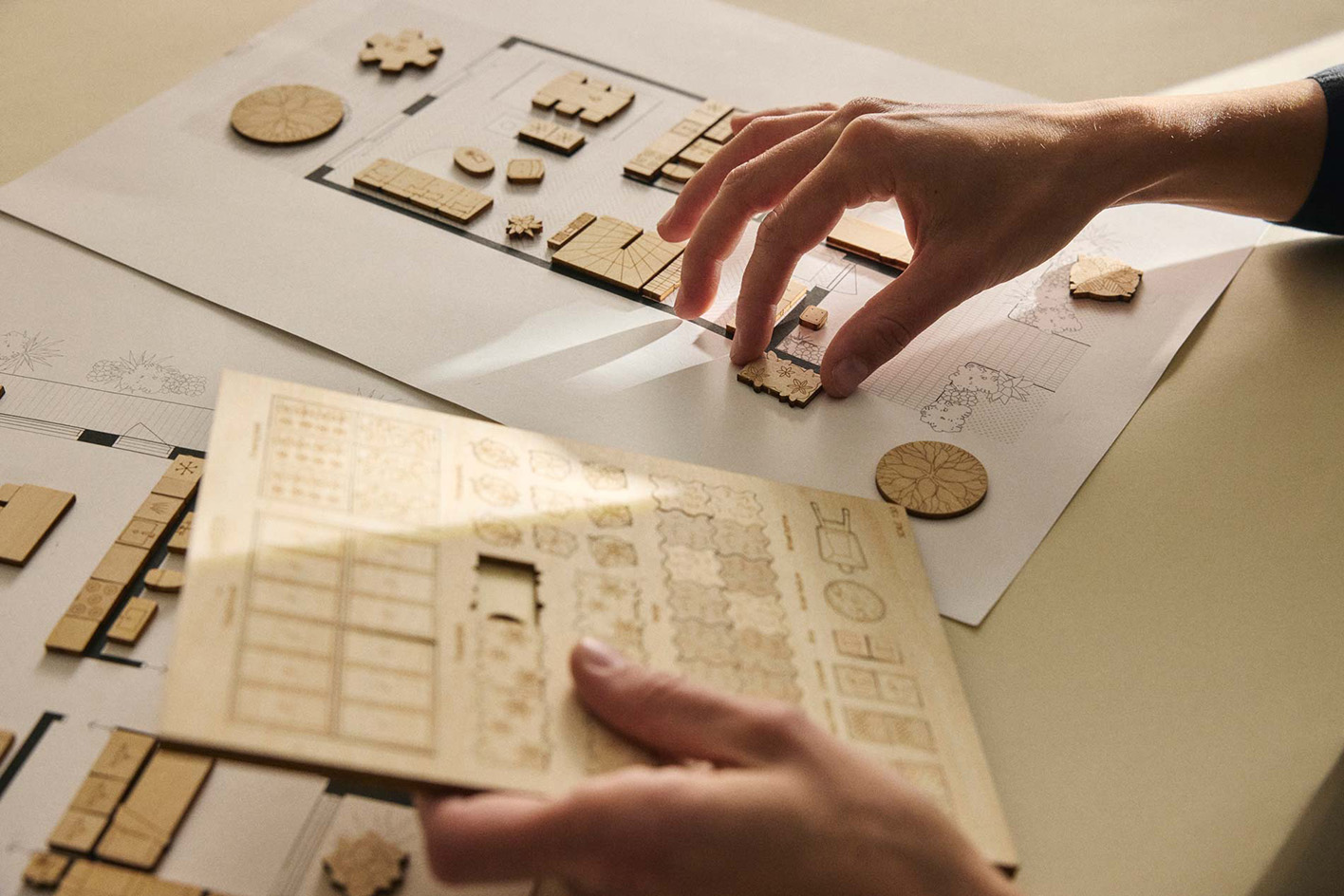 An analogue room planner kit makes designing your dream home a doddle
An analogue room planner kit makes designing your dream home a doddlePlanora, a new room planner option conceived by a team of three Swedish architects, is a beautifully produced, analogue tool to help conceptualise your new space
-
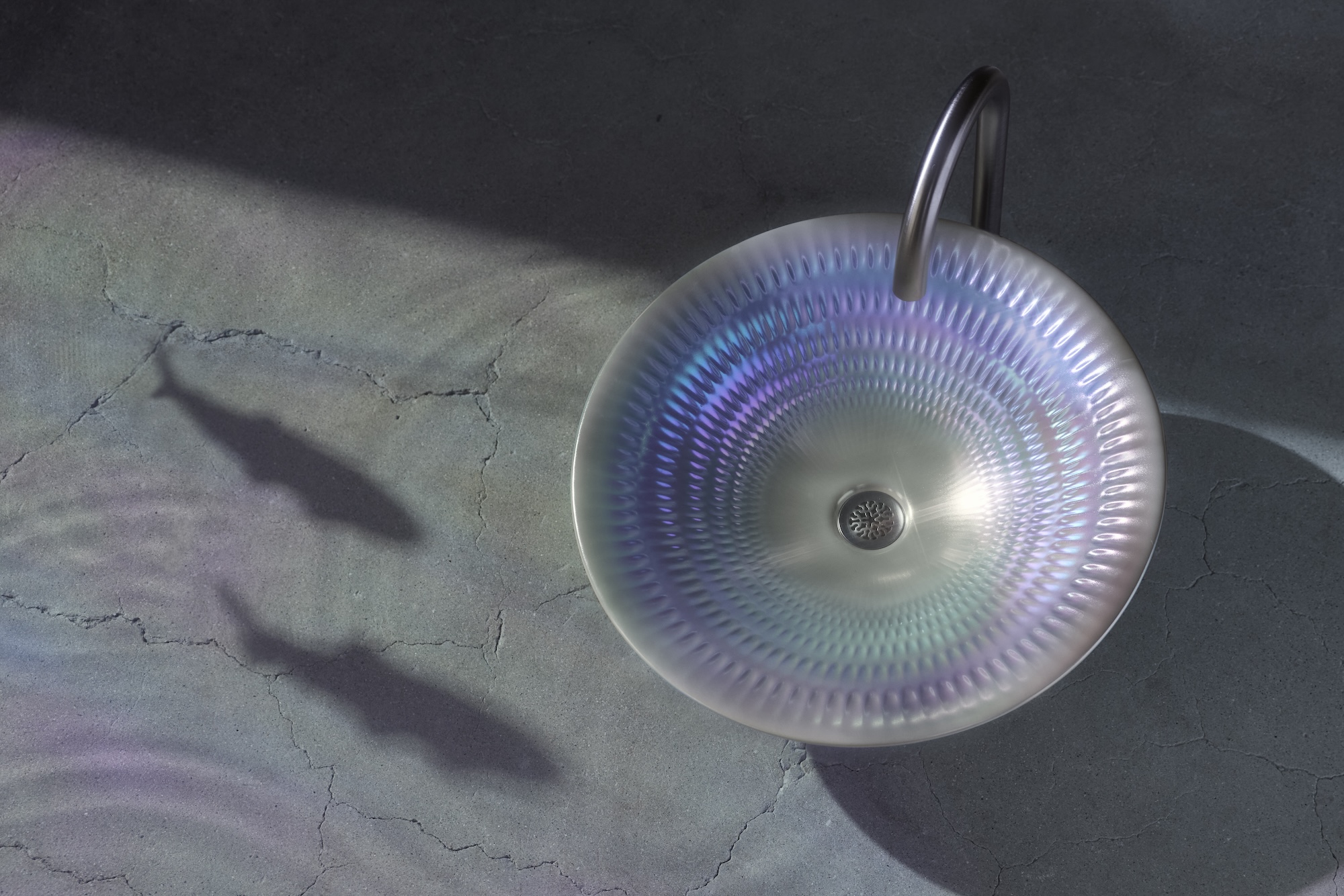 Kohler unveils ‘Pearlized’, an iridescent new bathroom finish with an under-the-sea backstory
Kohler unveils ‘Pearlized’, an iridescent new bathroom finish with an under-the-sea backstoryArtist David Franklin was inspired by glimmering fish scales and sunsets for this mesmerising debut
-
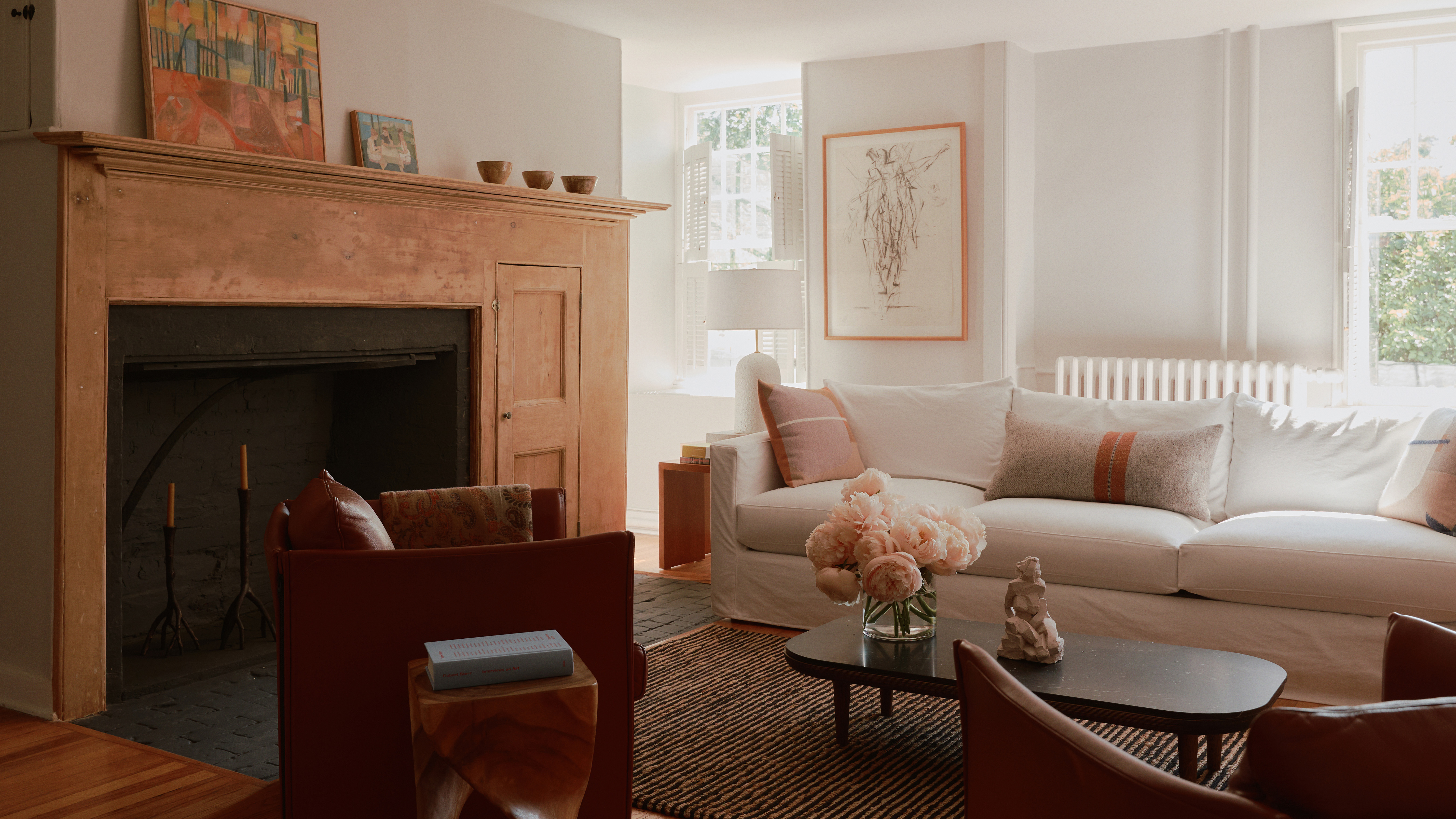 Once overrun with florals, this old Hudson farmhouse is now a sprawling live-work artist’s retreat
Once overrun with florals, this old Hudson farmhouse is now a sprawling live-work artist’s retreatBuilt in the 1700s, this Hudson home has been updated into a vast creative compound for a creative, yet still exudes the ‘unbuttoned’ warmth of its first life as a flower farm
-
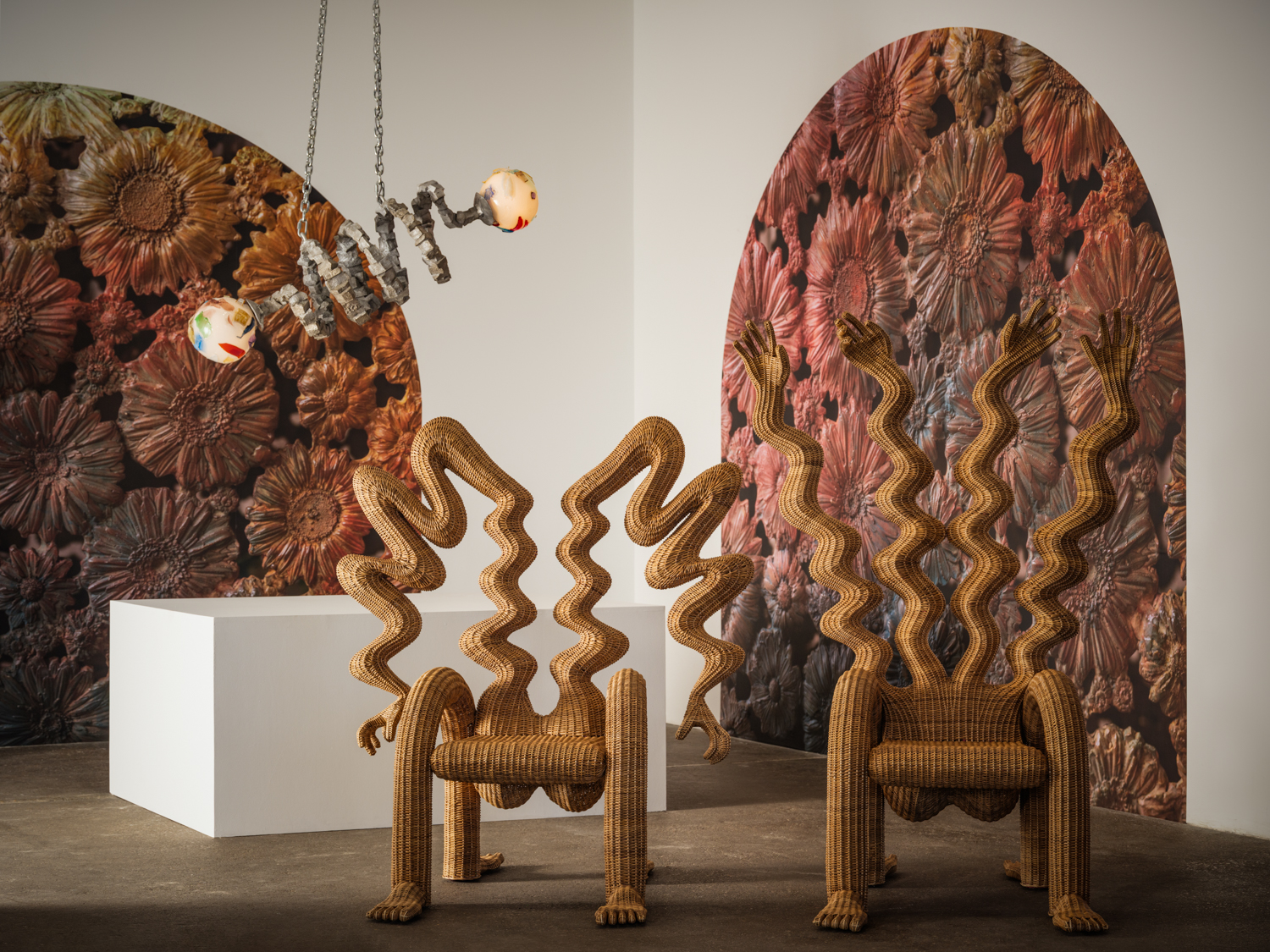 Chris Wolston’s first-ever museum show bursts with surreal forms and psychedelic energy
Chris Wolston’s first-ever museum show bursts with surreal forms and psychedelic energy‘Profile in Ecstasy,’ opening at Dallas Contemporary on 7 November, merges postmodern objects with Colombian craft techniques
-
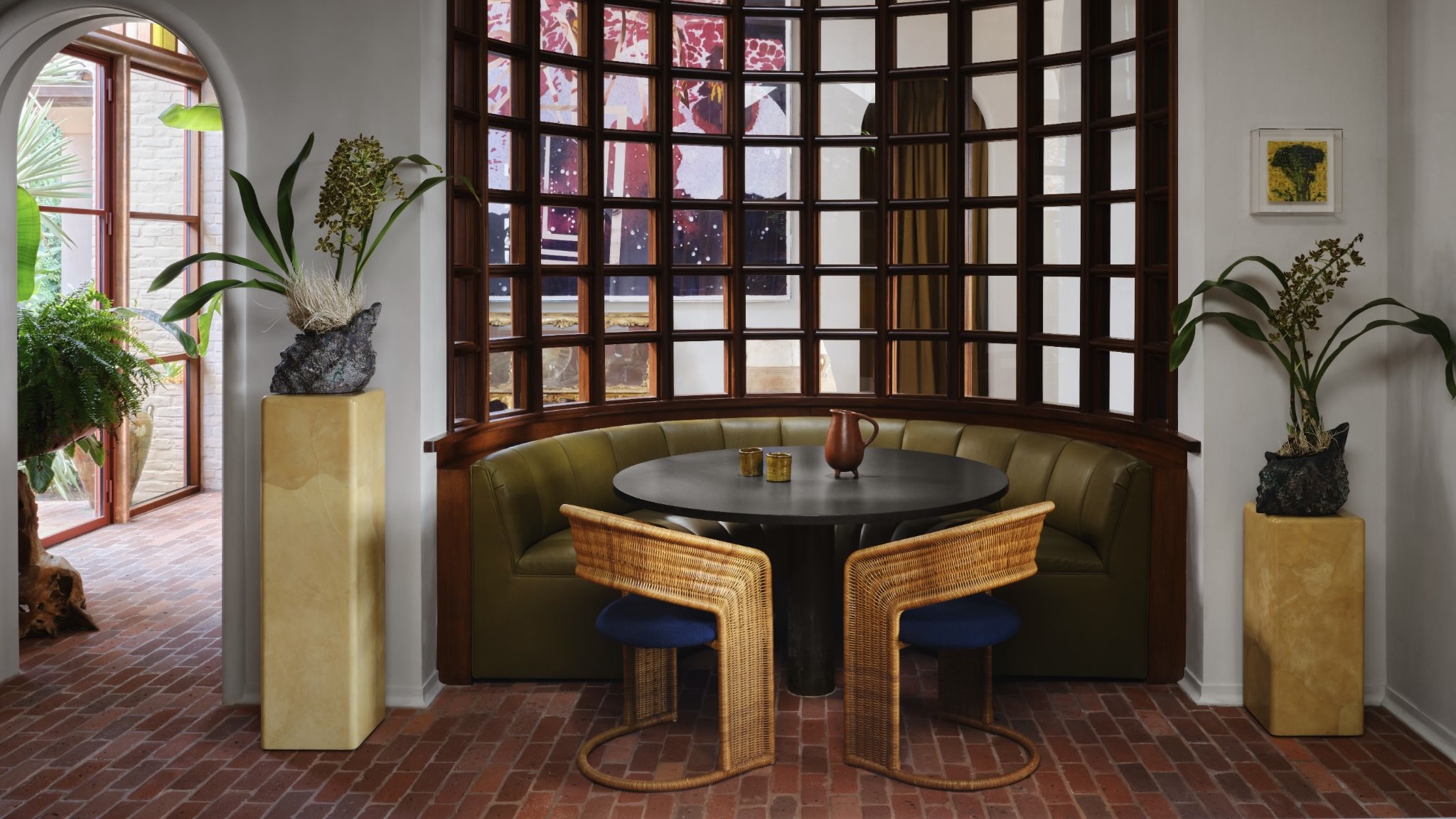 How an Austin home went from 'Texan Tuscan' to a lush, layered escape inspired by the Alhambra
How an Austin home went from 'Texan Tuscan' to a lush, layered escape inspired by the AlhambraThe intellectually curious owners of this Texas home commissioned an eclectic interior – a true ‘cabinet of curiosities’ layered with trinkets and curios
-
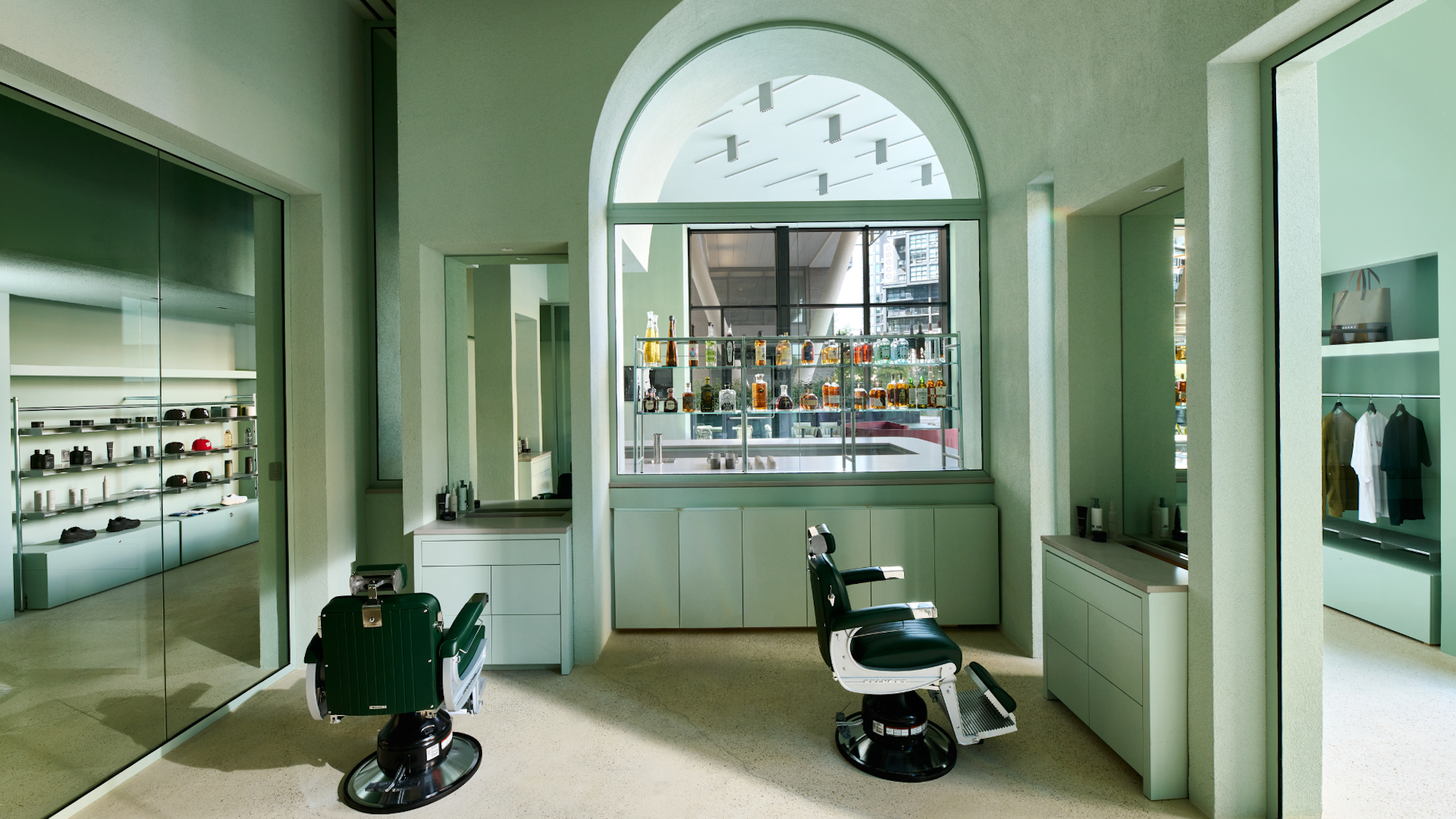 With a secret members’ club, this Washington, DC barbershop is a ‘theatre of self-care’
With a secret members’ club, this Washington, DC barbershop is a ‘theatre of self-care’At Manifest 002, come for a haircut; stay for the boldly hued social spaces designed by INC Architecture & Design
-
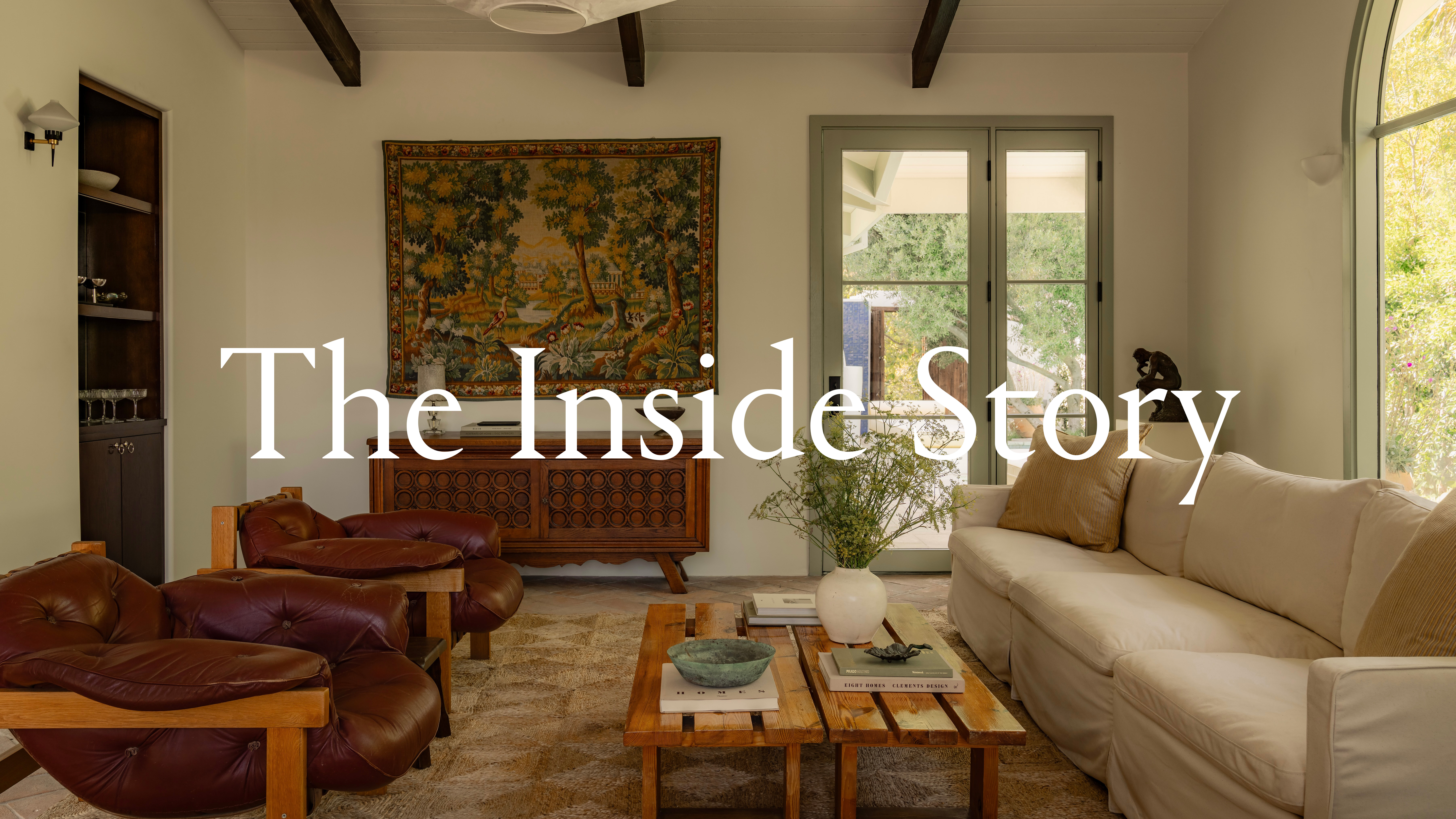 This Spanish Revival home in LA is full of sunlight, stillness and soul
This Spanish Revival home in LA is full of sunlight, stillness and soulA serene renovation by Ome Dezin in collaboration with interior designer and content creator Marco Zamora paints an old soul in a new light
-
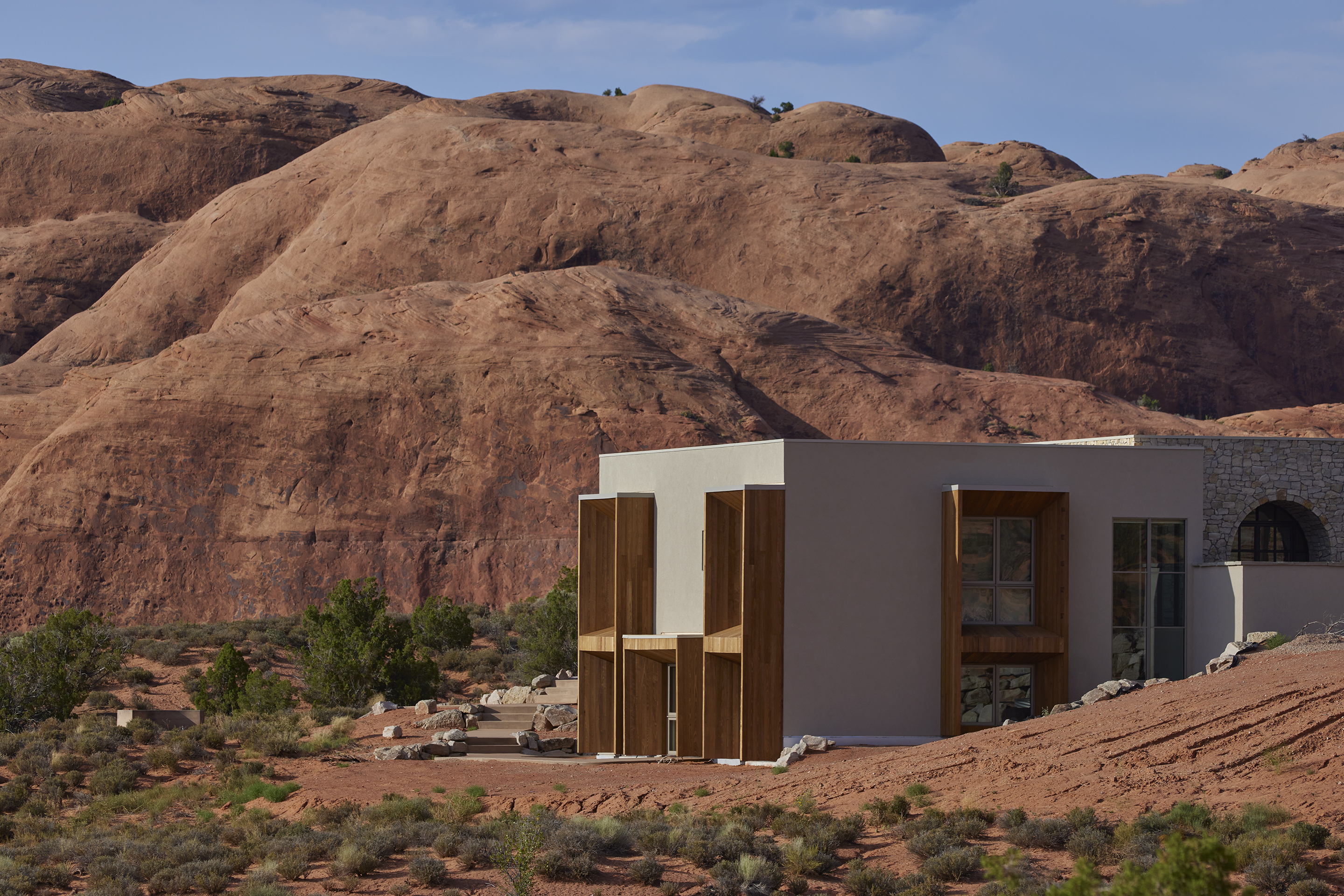 Step inside a ‘dream desert sanctuary’ tucked into Moab's rust-red landscape
Step inside a ‘dream desert sanctuary’ tucked into Moab's rust-red landscapeSusannah Holmberg designed this home to harmonise with the extreme climate and dramatic surroundings of Utah’s Moab desert. 'The landscape is everything'
-
 Nicole Hollis launches a collection of home objects ‘rooted in mindfulness’
Nicole Hollis launches a collection of home objects ‘rooted in mindfulness’The American interior designer worked with artists, makers and artisans to create objects for the home, emphasising materiality and visual simplicity